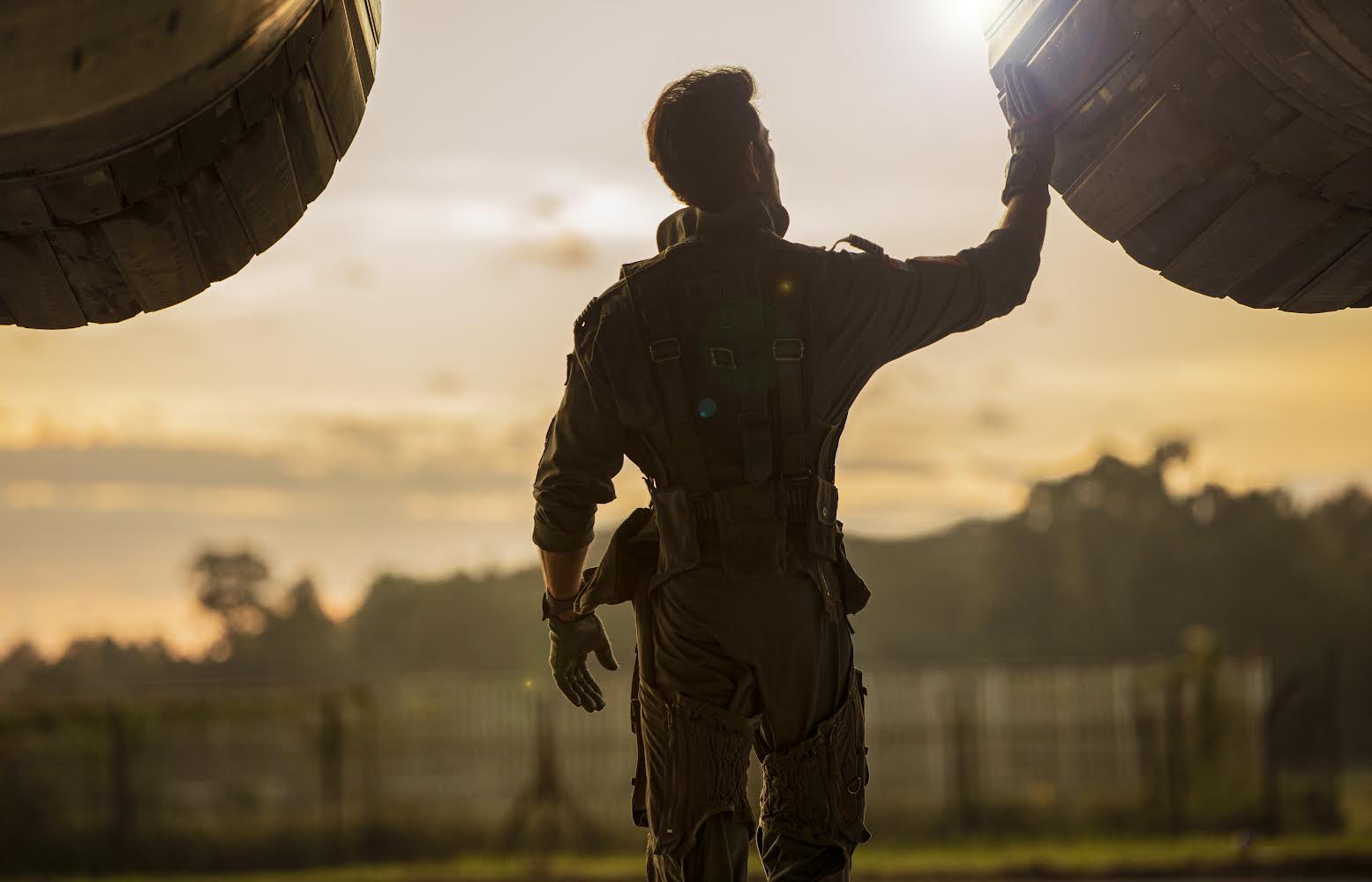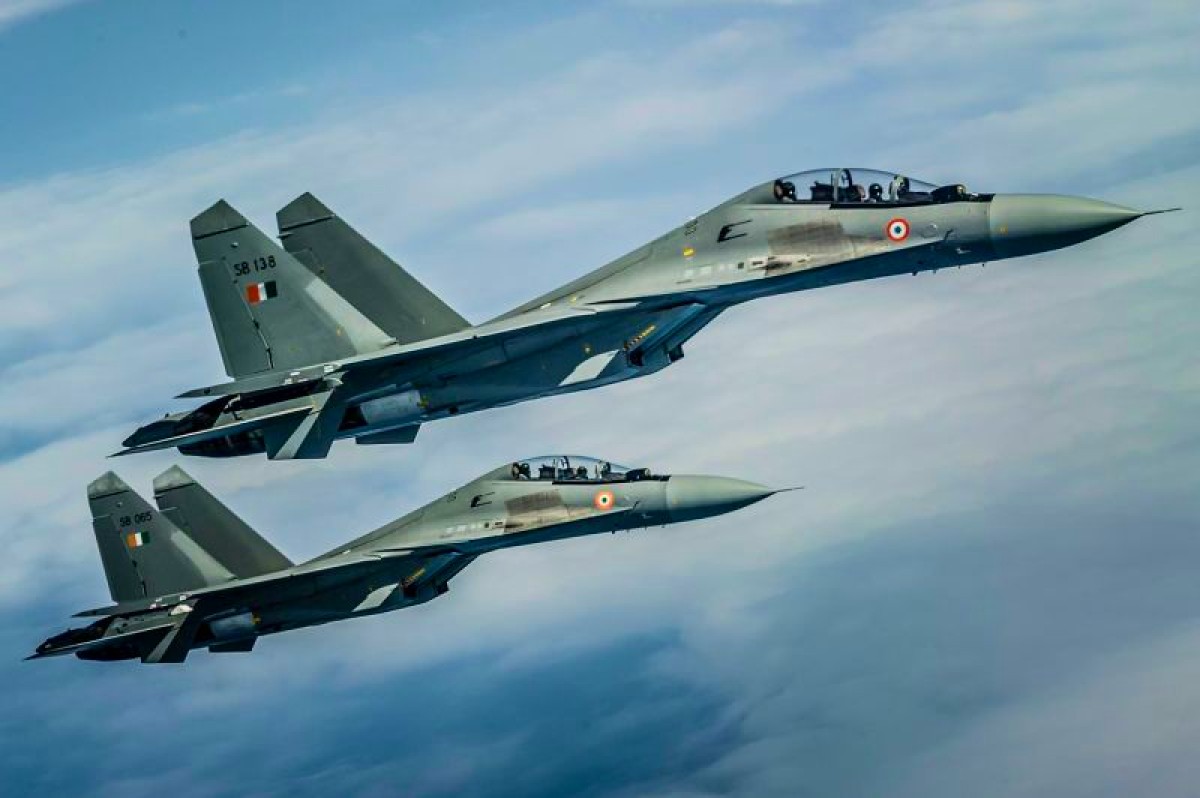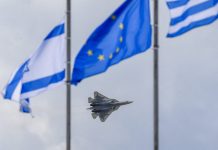The Indian Air Force’s (IAF) multi-role air superiority aircraft, Sukhoi Su-30 MKI, will be the star of the new Bollywood film, Fighter. Superstar Hrithik Roshan, who gave India its first superhero, will be the main lead in the movie.
YOU MAY LIKE: Russia’s S-70 Okhotnik Heavy Stealth Drone Starts Bashing Ukrainian Forces As Kyiv Desperately Awaits F-16s
In the latest teaser revealed for the film, slated for release in January next year, Hrithik Roshan is seen standing under engine nozzles. The aircraft is not visible in the photographs, and speculations were rife about the type of fighter jet the Bollywood star would be flying in the movie.
The EurAsian Times has confirmation that Hrithik Roshan would indeed be flying the Russian-made Su-30 MKI ‘Flanker-H’.
The air force officials have confirmed that the film’s shooting occurred in Tezpur (Assam), Air Force Academy Dundigal (Hyderabad), Gwalior, and Mumbai. Hrithik is attempting to pull a ‘Top Gun’- like movie with a whopping Rs. 250 crores budget.
The film is touted as the first aerial action film of India.
It seems Hrithik will pull a ‘Maverick’ like story, as Gwalior is home to the IAF’s own “Top Gun” institution – Tactics and Combat Development Establishment (TACDE). Deepika Padukone will play his love interest, who is also playing the role of an air force pilot, and Anil Kapoor will be Air-Officer-Commanding (AoC).

The high-octane action-orient film will be heavy on VFX. The actor is said to have undergone weeks of training on simulators to understand the nitty-gritty of flying.
Top Gun’s ‘Maverick’ played by Tom Cruise, evokes nostalgia and awe in every aviation geek’s heart despite the film being over three and a half decades old. Whether Hrithik Roshan can replicate the magic with the Su-30MKI on celluloid, the audience will know it early next year.
When F-16s Got Their Clocks Cleaned
With the Soviet-vintage MiG-21s nearing being phased out, the Sukhois will be the main platform for the IAF. The mighty metal war bird is known for its high maneuverability and long endurance. The aircraft is now fitted with India’s ‘Brahmastra’ (celestial weapon) – the BrahMos supersonic cruise missiles.
The Su-30MKI is a twin-seater aircraft powered by two Al-31FP turbojet engines. The aircraft has a maximum flight range of 3,000km, and with the in-flight refueling system, it can go up to 8,000km with two refuelings.
India first bought 140 Su-30s from Russia in 2000, and another version was made by Indian aircraft maker Hindustan Aeronautics Ltd (HAL) in 2002. The Su-30MKI was inducted into the IAF in 2004, and it became the backbone of the force’s fleet, with over 270 aircraft in the inventory.
Even when the Sukhois were not armed with BrahMos, they had given the F-16s a run for their money. In the joint wargames Cope India 2005 between the US Air Force (USAF) and the IAF, it has been reported that in the encounters between the American F-16s and the Indian Su-30 MKIs, the latter came out on top.
According to late renowned Indian air power expert Air Commodore Jasjit Singh: “Since the Cold War, there has been the general assumption that India is a third-world country with Soviet technology, and wherever the Soviet-supported equipment went, it didn’t perform well. That myth has been blown out by the results (of these exercises).”
While some observers pointed out that some of the parameters of the exercise were designed to fight “within visual range” rather than “beyond visual range” fights that the USAF follows. Nonetheless, the observers and participants admitted that the Indian fighter jets performed better than expected.
More than the drubbing, the US experts were worried about the growing sophistication of the Russian-made combat aircraft as China also deploys Sukhois in its fleet.
Su-30MKI Neighbour’s Envy
In 2019, two Su-30 MKIs dueled with eight F-16 fighters of the Pakistan Air Force (PAF) as they approached Jammu and Kashmir in what was called ‘Operation Swift Retort.’
The F-16s had one agenda – to claim at least one Flanker, the symbolic might of IAF. But they also underestimated its prowess.
From 0950 to 1015 hours on February 27, 2019, two Su-30MKIs with callsign ‘Avenger’ guarded Indian installations and engaged with eight F-16MLUs as they approached India during the Op Swift Retort.

The Su-30MKIs were a prime target for the F-16s. According to the veteran Air Force aviator Sameer Joshi, the PAF believed that losing a Sukhoi in air combat would effectively put the IAF on a back foot.
“Evidence shows that PAF launched over four AMRAAMs against the Sukhois during this engagement. What is less known is how the MKIs counterattacked,” Joshi had tweeted.
According to the aviator, one group of four F-16s fired a total of three Advanced Medium-Range Air-to-Air Missiles (AMRAAMs) against the Su-30MKI fighters, and all missed. After the attack, the IAF presented the wreckage of the AMRAAM to show Islamabad had indeed deployed the F-16, as the US-made jet is the only aircraft in Pakistan’s arsenal equipped to fire the weapon.
Joshi wrote that the two Su-30MKI jets pushed back. Using maps to plot the aircraft’s location, the Sukhoi fighters “counterattacked ignoring the high-density BVR (beyond-visual-range) threat from the F-16s…” Joshi said one of the Sukhoi jets managed to evade a fourth AMRAAM.
Following the counterattack by the Su-30MKIs, the expert contended that 10 out of 12 payloads launched by the F-16s fell out of range of their intended targets.
“It is highly possible that these payloads were dropped out of their desired envelope. Were these hurried drops by PAF due to the dash of the Avenger formation towards the LoC?” Joshi concluded.
- Ritu Sharma has been a journalist for over a decade, writing on defense, foreign affairs, and nuclear technology.
- She can be reached at ritu.sharma (at) mail.com




